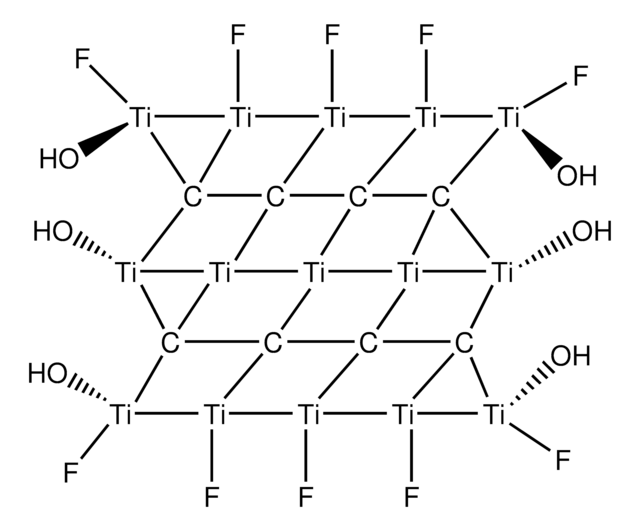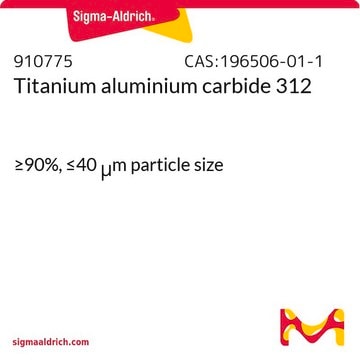All Photos(1)
About This Item
Linear Formula:
TiC
CAS Number:
Molecular Weight:
59.88
EC Number:
MDL number:
UNSPSC Code:
12352300
PubChem Substance ID:
NACRES:
NA.23
Recommended Products
Assay
98%
form
powder
particle size
−325 mesh
bp
4820 °C (lit.)
mp
3140 °C (lit.)
density
4.930 g/mL at 25 °C (lit.)
SMILES string
[C-]#[Ti+]
InChI
1S/C.Ti/q-1;+1
InChI key
YXIVWSJCLXKLJL-UHFFFAOYSA-N
Looking for similar products? Visit Product Comparison Guide
Related Categories
Storage Class Code
11 - Combustible Solids
WGK
WGK 1
Personal Protective Equipment
dust mask type N95 (US), Eyeshields, Gloves
Certificates of Analysis (COA)
Search for Certificates of Analysis (COA) by entering the products Lot/Batch Number. Lot and Batch Numbers can be found on a product’s label following the words ‘Lot’ or ‘Batch’.
Already Own This Product?
Find documentation for the products that you have recently purchased in the Document Library.
Customers Also Viewed
Raimo Silvennoinen et al.
Optics express, 16(14), 10130-10140 (2008-07-09)
Adsorption of human plasma fibrinogen (HPF) on 6 differently treated titanium samples (polished, polished and etched, and 4 titanium carbide coatings samples produced by using plasma-enhanced chemical vapour deposition (PECVD) method) is investigated by using diffractive optical element (DOE) sensor.
Marina Brama et al.
Biomaterials, 28(4), 595-608 (2006-10-20)
Titanium has limitations in its clinical performance in dental and orthopaedic applications. This study describes a coating process using pulsed laser deposition (PLD) technology to produce surfaces of titanium carbide (TiC) on titanium substrates and evaluates the biological response both
Hiroshi Moriwaki et al.
Journal of hazardous materials, 185(2-3), 725-731 (2010-10-26)
The aim of this study is to investigate the utilization of the powder of porous titanium carbide (TiC) ceramics as a novel adsorbent or a material for solid-phase extraction (SPE). The adsorption and elution of inorganic and organic pollutants, Pb(II)
J Rohrer et al.
Journal of physics. Condensed matter : an Institute of Physics journal, 22(1), 015004-015004 (2010-01-13)
We present a strategy to identify energetically favourable oxide structures in thin-film geometries. Thin-film candidate configurations are constructed from a pool of sublattices of stable and metastable oxide bulk phases. Favourable stoichiometric compositions and atomic geometries are identified by comparing
Woo Sik Kim et al.
Nanotechnology, 21(5), 055608-055608 (2010-01-07)
Single-phase layered titanium carbide (TiC) was successfully synthesized by reacting carbon nanotubes (CNTs) and titanium dioxide (TiO2) under a high direct current (DC) pulse. Single-phase TiC layer fabrication is confirmed as the transformation of multi-layered graphene from MWCNTs. Therefore its
Our team of scientists has experience in all areas of research including Life Science, Material Science, Chemical Synthesis, Chromatography, Analytical and many others.
Contact Technical Service









